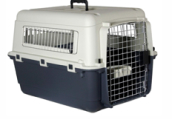Our Commitment to Safe and Comfortable Pet Transportation
From the very beginning, our company has been dedicated to providing high-quality pet transportation, prioritizing the well-being of each animal by using only passenger vehicles and skilled couriers.
This approach ensures the safety and comfort of pets, as passenger vehicles maintain a stable temperature and minimize noise and vibration, offering an ideal travel environment. Unlike cargo vans, where such conditions are often unattainable, passenger vehicles create a peaceful atmosphere essential for the emotional well-being of animals.
Every courier on our team undergoes specialized training to monitor pets consistently throughout the journey. We adhere to strict EU standards, including:
- Mandatory rest stops every four hours to allow couriers to check on pets, replenish water, and clean crates.
- High hygiene standards to minimize stress and ensure optimal care during travel.
These standards cannot be met through cargo transport, which is designed for other conditions and lacks the personalized care pets deserve.
We believe that quality transportation goes beyond simply delivering pets. It is a responsibility to ensure their safety, comfort, and emotional well-being at every stage of the journey. Our mission is to accompany your beloved animals with the utmost care and attention, making their travel experience as smooth and stress-free as possible.



 Loading More Items
Loading More Items





